MOAKSAN MOTEL [Korea Quality] / 모악산 모텔 [한국관광 품질인증]
14.6Km 2024-04-07
104-10, Moaksan-gil, Gui-myeon, Wanju_Gun, Jeonbuk-do, Korea
+82-10-5333-3022
The Moaksan Motel is located in the tourism complex at Moaksan Mountain. Newly refurbished and re-opened, it is known as a clean, cozy hotel offering a high standard of customer satisfaction. The tourism complex comprises a large public parking lot, local food restaurants, and a football pitch among other facilities. Moaksan Mountain is a popular hiking destination among hikers and the people of Jeonju. In addition, the hotel is just three minutes’ walk from the Jeonbuk Province Art Museum, while Gui Reservoir, where the National Canoe Championships is held by the Korea Canoe Federation, is situated in front of the hotel. The hotel also offers easy access to public transportation as the bus stop (Bus No. 970) is situated in the tourism complex, allowing guests to travel directly to Jeonju Bus Terminal.
Nambu Agutang (남부아구탕)
14.9Km 2024-04-07
Inbuk-ro 4(sa)-gil 60-8, Iksan-si, Jeonbuk-do.
Nambu Agutang is a famous restaurant for specializing in preparing blackmouth goosefish in Iksan.
Although the exterior seems a bit run down, the interior is neatly organized.
Interestingly enough, there is a survey on service level of each serving staff in front of register for diners to speak out their opinions.
Thus, you will find great service and of course, the taste of food is superb without a doubt.
For the past seven years, the prices for dishes have not changed even with inflation, and the owner even donates a portion of the profits the community and the less fortunate.
Overall an outstanding restaurant.
Dongboseong (동보성)
15.2Km 2024-04-07
437, Hana-ro, Iksan-si, Jeonbuk-do
Dongboseong is an authentic Chinese restaurant serving dishes prepared by a number of chefs from China. It has separate rooms and large banquet rooms for group dining.
Parque Provincial del Monte Moaksan (모악산도립공원)
15.9Km 2024-04-07
Moak 15-gil, Geumsan-myeon, Gimje-si, Jeonbuk-do.
Con varios templos budistas en su seno como Geumsansa, Guisinsa, Suwangsa y Daewonsa, el monte Moaksan alcanza 793 metros, ofreciendo una increíble vista panorámica de la zona del sur de Corea. Un punto interesante es que la montaña es el lugar donde se ubica el famoso templo Geumsansa, construido el año 599 con más de 10 tesoros culturales de gran valor. Desde la antigüedad, la montaña se ha considerado un lugar santo para los creyentes en Maitreya (personaje santo en budismo), y en los años 30 y 40 este fue el centro de atención de nuevas religiones, por lo que se crearon numerosos templos pequeños. Las hermosas flores de azalea cubren casi al completo la montaña con su deslumbrante color rojizo y rosado; y los cerezos de primavera también son una atracción única del lugar.
Templo Geumsansa (금산사(김제))
16.0Km 2024-04-07
Moak 15-gil 1, Geumsan-myeon, Gimje-si, Jeonbuk-do.
Situado en la entrada del Parque Provincial del Monte Moaksan, el templo Geumsansa fue construido durante el reinado del rey Beopwang de la época Baekje. Posteriormente pasó por una remodelación realizada por el monje Jinpoyulsa, con la cual mantiene su forma hasta la actualidad. En él se encuentran muchos restos históricos declarados como Tesoros Nacionales, y por conservar en buen estado muchas de sus instalaciones, es considerado como el templo budista más perfecto de la zona sur de Corea. La sala Mireukjeon, hecha con madera, es el único oratorio budista de 3 pisos. Los 3 pisos se encuentran conectados dejando un gran espacio vacío en el centro. En primavera el templo se ve repleto de gente que viene a apreciar el paisaje celestial que crean las flores de cerezos del lugar, y aún en invierno es visitado por los creyentes a rendir adoraciones a la estatua de Buda que se encuentra dentro de la sala Mireukjeon. En la Sala Memorial 1400, que fue construida para celebrar los 1.400 años del templo, se celebran diferentes eventos para los fieles budistas.
Principales tesoros:
Mireukjeon (Tesoro Nacional), Noju (Tesoro Nacional), Seogyeondae (Tesoro Nacional), Hyedeogwangsa Jineungtapbi (Tesoro Nacional), Geumsansa Ocheungseoktap (Tesoro Nacional), Geumsansa Bangdeunggyedan (Tesoro Nacional), Geumsansa Yukgak Dacheungseoktap (Tesoro Nacional), Geumsansa Dangganjiju (Tesoro Nacional), Simwonam Bukgang Samcheungseoktap (Tesoro Nacional), Geumsansa Daejangjeon (Tesoro Nacional), Geumsansa Seokdeung (Tesoro Nacional).
Bosque Recreativo de Gosan (고산자연휴양림)
16.3Km 2024-04-06
Gosanhyuyangnim-ro 246, Gosan-myeon, Wanju-gun, Jeonbuk-do.
El Bosque Recreativo de Gosan, situado en la aldea Osan-ri de Gosan-myeon, es un popular destino familiar durante todo el año. Repleto de densos bosques de pinos blancos y de otras especies, este bosque ofrece un lugar de descanso fresco en verano, gracias también a los muchos arroyos que lo surcan. En otoño, toda la zona se transforma en un arco iris de brillantes tonos amarillos, rojos y naranjas. Al llegar el invierno, la nieve cubre los árboles y el terreno, convirtiendo el bosque en un vasto infinito blanco. Con la primavera, florecen las azaleas y los cerezos, siendo entonces un lugar muy popular entre las parejas jóvenes.
Festival Musical del Monte Moaksan de Gimje (김제 모악산 뮤직페스티벌)
16.3Km 2025-03-17
Geumsan-ri 99-2, Geumsan-myeon, Gimje-si, Jeonbuk-do
063-540-3172
La ciudad de Gimje celebra el Festival Musical del Monte Moaksan, famoso en primavera por sus flores de cerezo. Durante el festival se realizan diferentes espectáculos para celebrar la belleza de este entorno natural. También hay rutas de paseos en los alrededores, como las de la Reserva Geumpyeong y Cheongdori-gil.
Festival Wild & Local Food de Wanju (완주 와일드&로컬푸드축제)
17.1Km 2025-03-19
Gosanhyuyangnim-ro 89, Gosan-myeon, Wanju-gun, Jeonbuk-do
063-290-3976/7/8
El Festival Wild & Local Food de Wanju busca dar a conocer la ciudad de Wanju, donde se puede realizar el cheollyeop (pesca en río), y conocer la vida silvestre coreana y sentir la nostalgia del pasado. El evento también provee la oportunidad de probar comida natural con productos agrícolas locales, y también una amplia variedad de plantas y animales de Wanju. Este festival tiene el propósito de ofrecer a los visitantes un sentimiento de nostalgia por la comida del pasado a través de diferentes programas y rodeados de la naturaleza.
Daeseung Hanji Village & Hanok Traditional Culture Experience Center (대승한지마을한옥전통문화체험관)
17.2Km 2024-10-17
18-4, Bogeun-gil, Soyang-myeon, Wanju-gun, Jeonbuk-do
+82-63-242-1001
Daeseung Hanji Village in Wanju County, Jeonbuk-do Province was part of Jeonju City from the time of the Baekje Dynasty until 1935, when Wanju County was separated from Jeonju City. The village has been famous for the production of hanji (traditional Korean paper handmade from mulberry tree) since the Goryeo Dynasty, and is the origin of the world-famous ‘Goryeo Paper.’ Most of the villagers were still employed in producing and selling hanji until a few years ago, but these days they work in various businesses including farming and stock farming. However, the hanji masters continue to preserve and promote the hanji tradition through the Hanji Exhibition Hall and Experience Center and other activities. Surrounded by low hills (Seungraebong and Duribong), the village consists of farmhouses, cattle sheds, old hanok houses, the site of the seodang (village school), and a pavilion, and has traditional games including a swing and tuho (stick throwing). The center is composed of hanok accommodation, the Hanji Experience Center, and the Hanji Craft Exhibition Hall set amid a quiet, clean environment. In particular, the Hanji Experience Center provides various interesting and reasonably-priced hands-on experience programs for people of all ages including kindergarten children, such as making hanji, hanji fans, hanji shoes, hand mirrors, hanji masks, instruments, pencil holders and so on. The hanok accommodation has eight guestrooms, each of which features a large window and is equipped with a modern-style bathroom, 40-inch TV, air-conditioner, refrigerator, dressing table, etc. The rooms are decorated with wooden and hanji materials in a simple yet elegant style. The house has also a seminar room (66m2) equipped with a beam projector for group seminars. The separate restaurant provides Korean-style meals, and guests can also use the kitchen. As the house is surrounded by a pine grove, guests can appreciate the clean air scented with pine anywhere in the house.
Museo Nacional de Iksan (국립익산박물관)
17.9Km 2024-04-07
Mireuksaji-ro 362, Geumma-myeon, Iksan-si, Jeonbuk-do
El Museo Nacional de Iksan (antiguamente llamado Museo Mireuksaji) fue inaugurado en el año 1997 con el objetivo de conservar y difundir la cultura del reino de Baekje (18 a.c – 660 d.c). Aquí se exponen todas las reliquias descubiertas y excavadas en el solar del templo Mireuksa (Sitio Histórico), el templo más grande correspondiente a la época de Baekje.
En total cuenta con aproximadamente 19.200 reliquias históricas y culturales. Teniendo en consideración la fachada del templo, el museo se ha construido a una altura más baja, cuya construcción arquitectónica, ha tomado la misma forma que la pagoda del templo, lo que ofrece otro espectáculo para apreciar.
Las salas de exposición están clasificadas temáticamente, en la sala central, sala de historia, sala de artes budistas, etc., entre otros, y, entre las reliquias que conserva, se destaca la pagoda de piedra del templo Mireuksa, el más grande de Oriente (Tesoro Nacional), Dangganjiju del templo Mireuksa (dangganjiju es la denominación que se le daba a las columnas de piedra que se encuentran en el interior del templo budista) (Tesoro), etc.

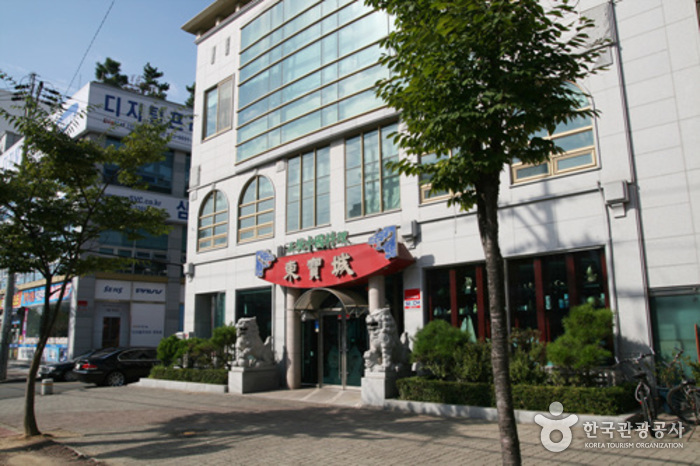
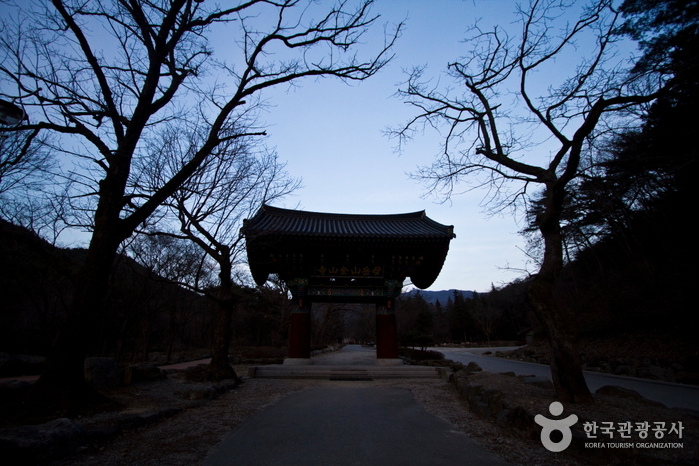
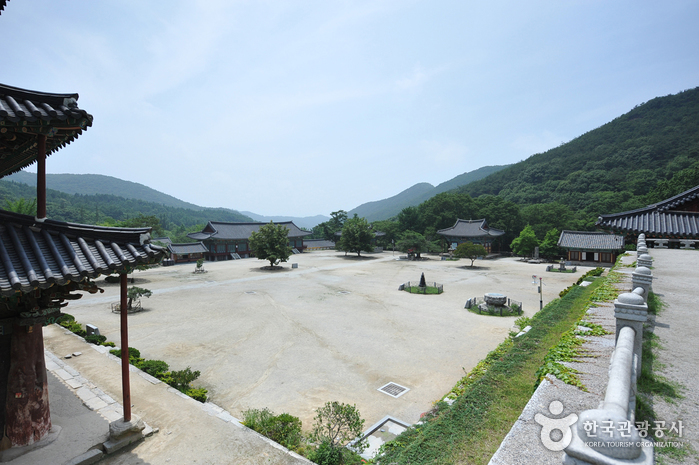
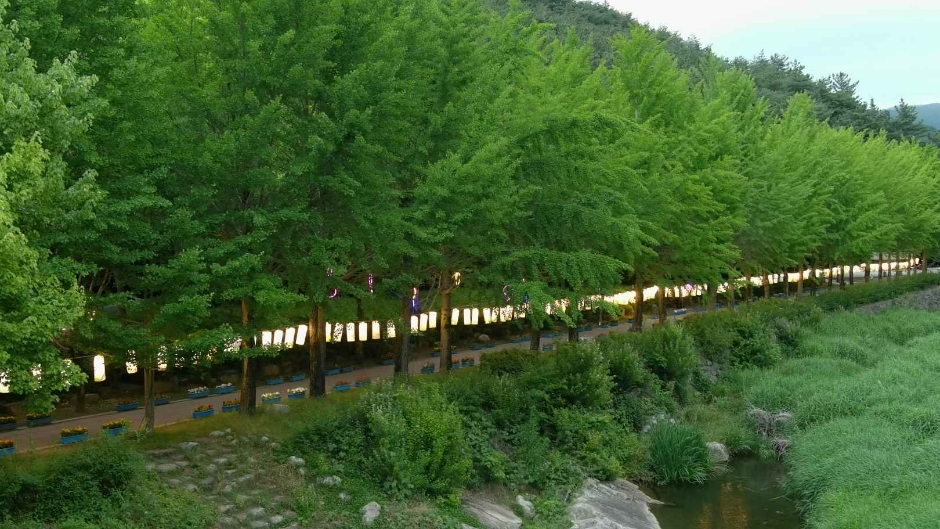
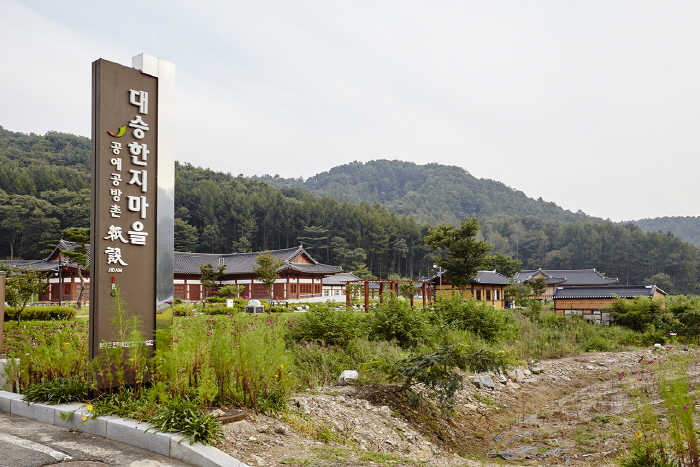
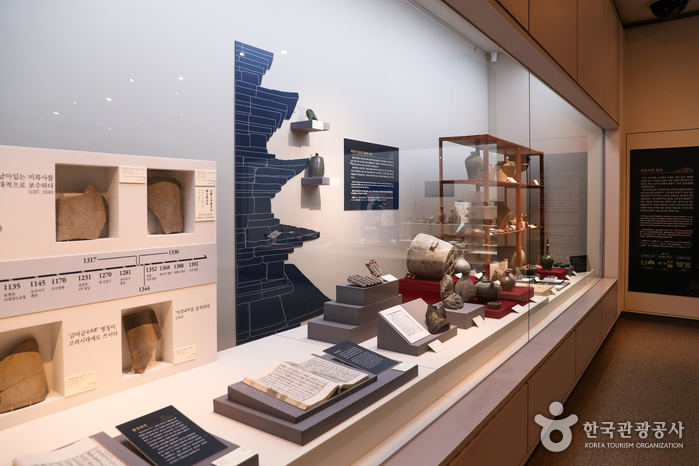
 Español
Español
 한국어
한국어 English
English 日本語
日本語 中文(简体)
中文(简体) Deutsch
Deutsch Français
Français Русский
Русский